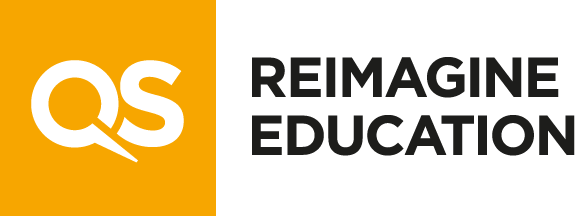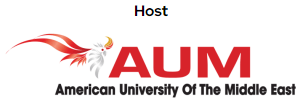Security In Blockchain: The Future of Digital Credentials
Crafting A Winning Application: What’s Unique?
Crafting A Winning Application: Insider Insights
Application Part 1: Approach
In this five-part series, we delve into the best of our 7500 applications to provide you with all of the insight necessary to take you through the Reimagine Education Awards application process. In this first section, we provide some guidance on how to succeed in section one – telling us about your project approach.
You’re doing something innovative and exciting in the world of education, and you think that the ‘Oscars’ of Education deserve to hear about it. You’ve consulted the list of Award Categories, opened your account, completed your team details, and are now faced with the first of the application’s main sections: Project Approach.
In this section, we want to understand, as clearly as possible, why your solution exists. We want to know, as precisely as possible, the problem that you’re trying to solve. We want to know the group of people for whom you’re trying to solve it. Then, in a sector inundated with new innovations, we want you to tell us exactly what differentiates your work from existing approaches.
Question One: “Who is your target audience? What problem is your project trying to solve for that audience?”
The best applications to Reimagine Education don’t try to ‘solve education’. They will, typically, be directed towards a carefully-identified problem faced by a carefully-identified group of learners. For example, 2020’s E-Learning winner responded:
Our primary target audience is those who wish/need to upskill or reskill in tech at the university level in order to improve their employability outcomes. The lack of gender diversity in tech is another challenge for workplaces, and the project looks to address through improving inclusion and accessibility. According to research from the Tech Talent Charter, women make up 17% of the UK’s tech/digital workforce. These projects aim to improve diversity in tech through accessibility, offering short, flexible options for online learning.
Judges are incentivized to immediately reward projects that are able to immediately identify, for example, a ‘primary target audience’, so that they are able to then evaluate how well the solution is tailored for that group, or those groups.
When asked to articulate how their solution solved a problem for their target audience, 2020’s Best Online Program winner wrote:
Too many young Africans are unemployed/underemployed because they lack access to pathways that lead to high productivity jobs. While the African tech sector has grown significantly in recent years, the supply of African tech talent lags behind. Why? Traditional education isn’t demand-driven, and not producing enough employable tech graduates. Online learning might be more responsive, and offer economies of scale, but without local support, they are inaccessible to many learners in Africa, where fundamentals like internet access, foundational knowledge, and links to employment opportunities are often missing. Scalable solutions require local delivery partners, providing infrastructure in order to distribute non-scalable aspects of education- assets (computers, internet) and resources (facilitators, local knowledge). Local coding schools are popping up and might bridge some of these gaps, but they are fragmented, poorly resourced, and don’t scale. Our solution: we link African coding schools in a network, and provide them with tools and services to overcome the common challenges they face in selecting, training, and accelerating young Africans into tech careers.
Here, judges particularly esteemed the clarity, brevity, and specificity with which the African Coding Network expressed the value of their solution. The first half of the application answer sets out the context within which the problem exists, with a particular focus on explaining why existing approaches have proved deficient or limited. This explicit consciousness of how a solution engages with existing practice, competitors, or problems is essential for those seeking to answer this question well. Though the solution itself is not articulated in as much depth, this is not a problem, as specificities will be explained later. The challenge here is to do what African Coding Network did, and, at some point within the answer, sum up the solution in a simple sentence or two.
Question Two: How does your project solve this problem for that audience?
The ‘hows’ and specificities should be omitted from question one because they will be dealt with here. Here, we want to understand exactly what makes your solution – its mechanisms, processes, or qualities – ideally-suited to solving the specific problem you’ve identified in section one. There should be clear links between your answer to question one, and your answer here: the solutions you identify should be explicitly related to aspects of the problem you’ve identified in question one. For example:
The project leverages the expertise of world-class higher education institutions such as the University of Leeds, the University of Lancaster and the CCI, all brought together on FutureLearn’s platform, built with accessibility in mind, to transform access to education for learners around the world. This allows learners to develop their digital skills any time, anywhere, on any device, free of charge. […] These projects have also attracted a nearly 50-50 gender split across all of the courses, with over 50% of learners outside of traditional university age groups, promoting a more diverse tech-skilled workforce.
Here, the emphasis on having created a solution that is tailored to the needs of non-traditional coders (both in terms of gender and age) engages with the initial problem (a lack of diversity in technology), while alluding to those aspects that make the application well-suited for solving that problem. Any links between question two and one – spelled out as clearly as possible – will be well-received by our judging audience.
Question Three: In what ways is your project truly innovative? Please explain as clearly and thoroughly as possible.
Here, we’re asking about differentiation: how clearly can you make the case that you’re genuinely doing something different. To help guide your thoughts, the application form suggests a number of ‘innovation areas’ within which you might be innovating:
- Product innovation
- Process innovation
- Audience innovation
- Technology innovation
We also ask whether your application is primarily exploitative – say, using existing technology in a more efficacious way – or exploratory – trying to make new technologies work for educational delivery.
For example, last year’s Science of Learning Award winners wrote:
Adult learner online learning has been growing. Universities have adopted online courses for teacher-preparation programs, but learning is not interactive or is merely a powerpoint presentation with limited options for practice or application. Digital training solutions are designed to provide access to information that is not always supported by the research in the science of reading which is one of the most significant challenges in the field of education today. AIM Pathways approaches this problem directly by ensuring that every topic is aligned to specific research which is referenced in the actual course material. It uses student profiles and real case studies of struggling readers that participants must learn to practice and apply the targeted knowledge they have gained. There are different teaching/support modes – 1) synchronous/asynchronous learning, 2) live instruction using active online practice and case study activities, 3) personalized professional development paths based on teacher knowledge/student need, 4) a resource reference guide for later classroom application – Dr. Julie Washington, Georgia State University, and Elsa Cardenas-Hagan from University of Houston have contributed videos to the platform by adding expertise in working with students who use African American English dialect and/or English Learners making this a differentiator for instruction.
Here, the strongest aspects are the emphasis on specific delivery modalities that, the authors argue, are innovative – and a focus on the contributions of Dr. Washington and Cardenas-Hagan. The best answers to this question will be able to categorize their project innovations within one of the suggested criteria, and will attempt to explain why their project is either exploitative or exploratory.
A final note
One frequently-asked question we receive concerns the difference between Area 1, Question 3 and Area 2, Question 1. As our Steering Committee perceive it, the primary difference is that the final question of Section 1 – ‘In what ways is your project truly innovative?‘ is asking you to highlight what is new about your approach, while the first question of Section 2 – ‘How does your project replace, and/or improve existing pedagogical practice or theoretical approaches? Please outline what makes your project superior to similar or existing practice’ – is asking you to explain what is superior about that innovation. The distinction is between novelty and superiority. We are keen to separate these aspects out, as what is new (or newer) is not always demonstrably superior. We’ll delve into this difference further in tomorrow’s post – which will take you through examples of best answers for the Section 2 questions!
We hope you’ve found this introductory post helpful. We’d love you to share your feedback on this post with us. If you’re feeling emboldened to begin your application, you can do so today for your chance to win $50,000 in funding, and one of 2021’s ‘Oscars’ of Education!

